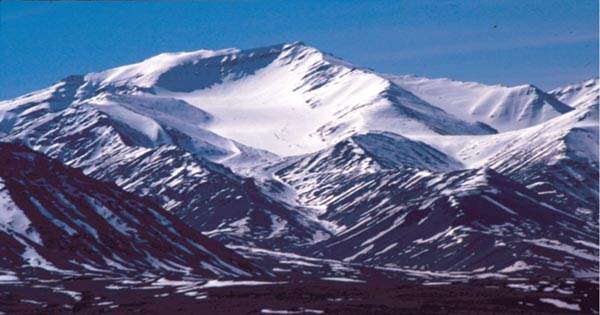Great mountain ranges are formed when one tectonic plate is pushed under another while the upper plate is lifted. When the process stops, the mountains are eroded by weather and erosion. Geologists have been embroiled in controversy over whether erosion specifically determines the height of mountains from glaciers, but new evidence proves that rain, wind and snow are largely irrelevant.
According to one theory, this means that high latitudes can never support high altitudes. The experience of a mountain depends on the amount of weather and therefore the location. In the tropics, mountains can rise very high before glaciers form, the movements of which will erode them. Near the pole, the snowline is much lower.
Dr Armin Dielforder of the GEOZD Germany Research Center for Geoscience presents evidence of an alternative approach. Dielforder estimates that the force in the world has increased its range in the first place. He argued that the forces to extend the boundaries of the plate are proportional to the force of friction between the plates. This, in turn, can be estimated by measuring the heat flux produced by this friction, as well as by measuring the foot angle of the mantle material supporting the deep angle of the point of collision and the upper plate.
Matches between measurable heat and ward upward forces Dielforder is trying to guess that it may not be perfect; at a minimum, different rock types present a complex subject. Nevertheless, Dielforder considers heat flux to be a good proxy for the crystal forces that make up the mountains.
Instead of looking at the highest peaks, Dielforder smooths out the hills and valleys considering the average height of each range. When Dielforder has drawn an average height of 10 mountain ranges (including three divisions of the Andes) against their supposed crystal forces, this relationship refers to these forces rather than the climatic conditions, controlling their height, the interrelationship is impressive.
Dielforder and co-authors argue that although the erosion is undoubtedly later on in the mountains, its effects are balanced by the forces at the bottom, Presenting results in nature. Kelin Wang of the Pacific Geosciences Center draws a resemblance to icebergs in the news and views section attached to it. If the material is removed from the top, it will come out of the water due to the natural stimuli of the ice, almost resisting the reaction.
However, Wang expressed doubts about Dilford’s decision, noting that most of the specimens were in the medium height range. If the effects of glacial weather only benefit at higher altitudes or at very high altitudes, Dielforder’s work would be relevant for low-rise but not for high peaks. Moreover, Dielforder assumes that the horizontal and compression at the bottom of the mountains are the same, where other geologists expect higher horizontal pressures, which would impair conclusions.













